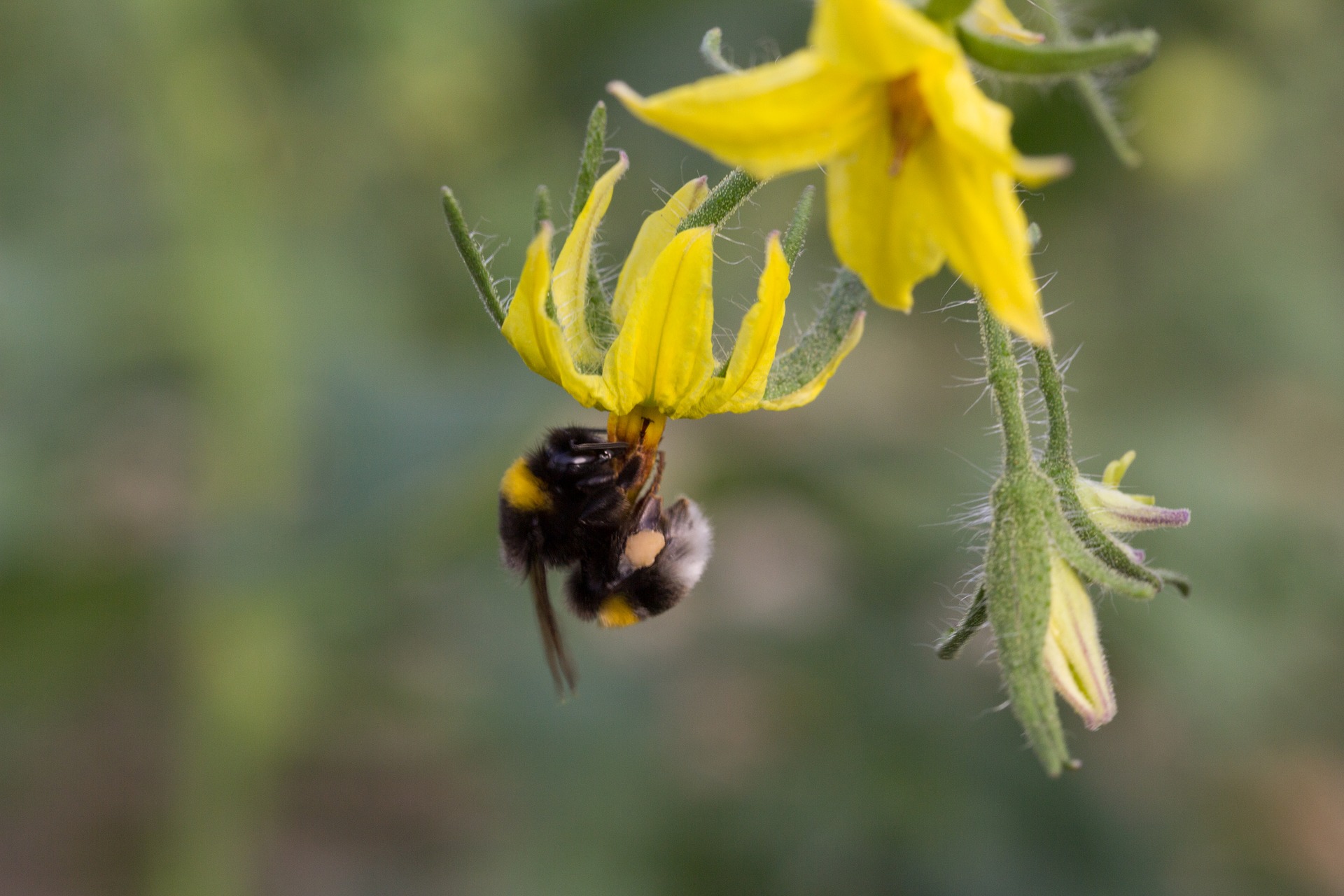A plant virus spread by aphids renders tomato plants irresistible to bumblebees, which rush in to pollinate them, a new study has shown. 
Scientists have known for some time that some viral infections can alter the production of scent molecules, known as plant volatiles, which leaves release.
This has the effect of attracting aphids and other sap-sucking insects which, in turn, help to spread the virus farther afield just as mosquitoes spread malaria between humans.
What researchers hadn't anticipated was that the same viruses would also affect the way plants get pollinated.
Cambridge University plant scientist Beverley Glover and her colleagues studied cucumber mosaic virus (CMV) which, despite the name, is actually a serious problem for tomato plants.
The team infected a batch of tomatoes with the virus and then offered bumblebees a choice of these CMV-infected plants, or an equivalent group on uninfected control plants.
In both cases the bees were prevented from seeing the plants, which were hidden behind a metal grille, meaning that the only cues available to them were odours issuing from the plants. More than 70% of the time, the bees chose to visit the CMV-infected plants, the team found.
The virus achieves this effect, the researchers suspect, by using a gene called 2b to manipulate the pattern of gene expression in the host plant to shift the spectrum of smell molecules that it makes.
Infected plants, they think, subsequently make more smells that bees like, and fewer deterrent smells such as those produced once a flower has already been visited and pollinated. The overall effect is to make the plant smell much sweeter to a bumblebee.
But being infected with the virus was bad news for the tomato, with fruit yields dropping dramatically to a tenth of that seen in uninfected controls. However, when bees were allowed access to pollinate the crops, the yields climbed again to a level that was only about half that seen normally.
Surprisingly, though, the virus is not spread by bees, so why has it evolved to make infected plants so attractive to them?
In their paper in PLoS Pathogens, the Cambridge team argue that it's a case of viral payback for the plant.
Using a mathematical model they show that, by making the tomatoes more alluring for bees, the reproductive prospects for the plants can be greatly enhanced. This reduces the benefit to the tomato of becoming resistant to the virus because, if it does so, it must forego the reproductive benefits of being susceptible to CMV.










Comments
Add a comment